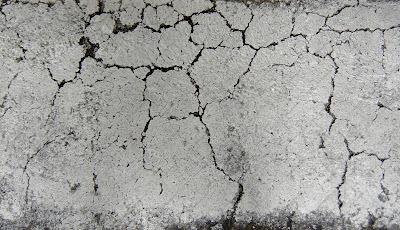Cracks in the Wall

Earlier this month, I recounted how a player character in my ongoing House of Worms Empire of the Petal Throne campaign, Aíthfo hiZnáyu, had been (seemingly miraculously) returned from the dead and that the process of his resurrection had left him changed. As described in the linked post, Aíthfo was now afraid of fish. More than that, he was convinced that they were following and plotting against him. This made it difficult for him to travel by water, as he felt the fish in the water all around the vessel and this made him uneasy. Likewise, he forbid the catching, let alone eating, of fish in his presence, much to the chagrin of his uncle Grujúng, who frequently whiled away the hours of sea travel by angling over the side of whatever boat upon which he found himself.
Exactly why Aíthfo had such an irrational fear and hatred of fish was unknown. One of the characters, Znayáshu, was convinced that it held a clue as to the nature of his resurrection. As it turns out, Znayáshu – or, more precisely, his player – was correct. I intended this strange behavior to be the first clue as to what had happened to Aíthfo. However, I was the only person in the campaign who knew the truth; not even Aíthfo's player had any certain knowledge, only guesses and theories. This is typical of the way I referee my campaigns: I'm constantly tossing out little tidbits of information to pique player interest and to encourage them to pursue certain avenues of investigation, but it's entirely up to them to piece them together.
Another clue appeared in last week's session, as the characters' vessel put in at the port of the Naqsái city-state of Chámara. Chámara is an important trade hub between the Naqsái peoples of the eastern part of the Achgé Peninsula and the somewhat mysterious Hnákho peoples of the western part. Since the characters were on their way westward to learn more about the Hnákho, whom they believed to have some connection to the legendary Empire of Llyán of Tsámra, stopping by Chámara made good sense. Furthermore, they needed to resupply, since it had been several weeks since they left the city-state of Pichánmush and their fresh water was dwindling.
Upon leaving their ship, Aíthfo noticed something unexpected. Everywhere in the city he looked, he saw flaws, imperfections that he knew for certain he could exploit militarily. There were weaknesses in the construction of Chámara's walls, defects in the rushqá-ceramic armor and weapons its soldiers carried, and faults in the way its streets and thoroughfares were laid out. In an instant, all Aíthfo saw was evidence that this city of some 200,000 Naqsái was ripe for conquest, if only saw what he did. Idly, he reckoned out loud that, with maybe 60 or 70 well-trained Tsolyáni soldiers, he could took on the whole of Chámara and win. It was all so clear to him that he marveled at the fact that no one else had ever noticed it before and exploited it.
Hearing this was enough to convinced Znayáshu of what had happened to him clan mate. The faiths of several Tsolyáni deities forbid their followers from eating fish for obscure doctrinal reasons. One of these deities is Chegárra the Hero-King. The Naqsái have a god of their own called Eyenál, whose characteristics are not dissimilar to those of Chegárra, leading Znayáshu to surmise that perhaps Eyenál is simply the local name of Chegárra. Previously, Aíthfo had been resurrected from the dead by the high priest of Eyenál and this sorcery had resulted in his body being inhabited by some part of Eyenál. Perhaps, Znayáshu reasoned, that part still remained within him and effected his second resurrection, this time manifesting within him different special abilities than he'd displayed previously.
As of yet, there's no proof that Znayáshu's theory is correct, in whole or in part, but it seems to fit the limited evidence the characters currently possess. At the very least, it's a reminder that the gods of Tékumel are both real and have been known to meddle in mortal affairs for their own inscrutable reasons. Given that much of the mess currently engulfing the Achgé Peninsula seems to relate to the activities of She Who Must Not Be Named, the dread Goddess of the Pale Bone, who seeks to eliminate all life from the face of Tékumel, it is not at all unreasonable to assume the other gods would find a way to oppose her, as they have done in the past.
Is that what has happened to Aíthfo? Only time will tell.
James Maliszewski's Blog
- James Maliszewski's profile
- 3 followers



